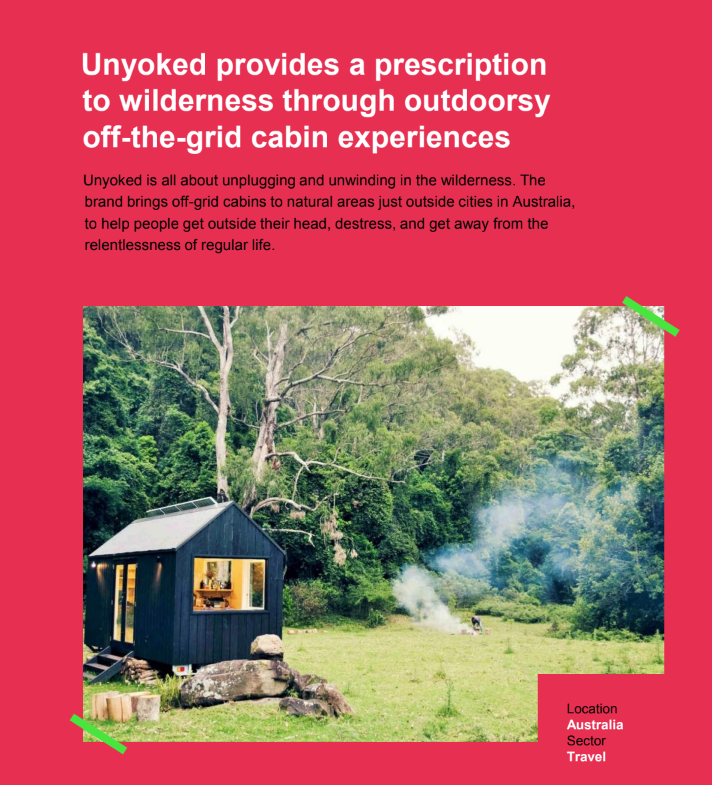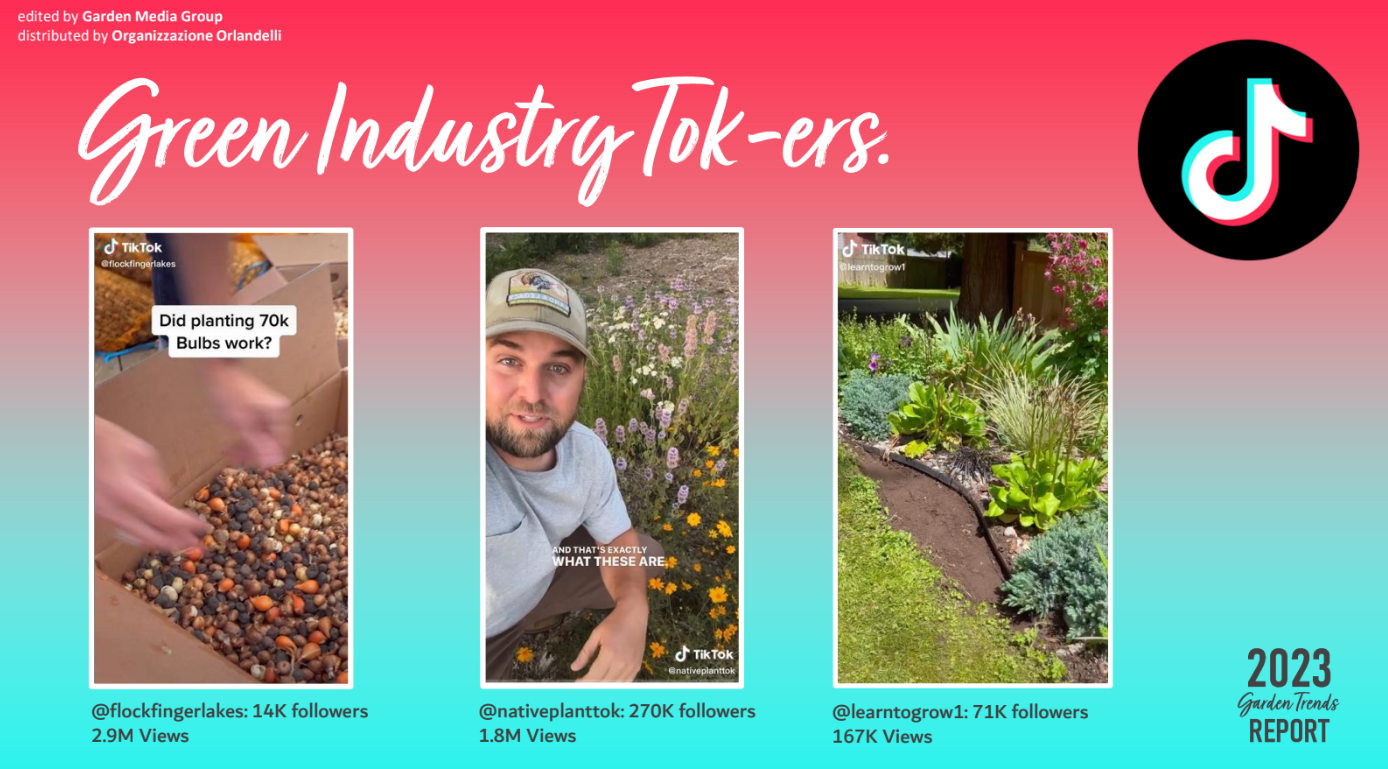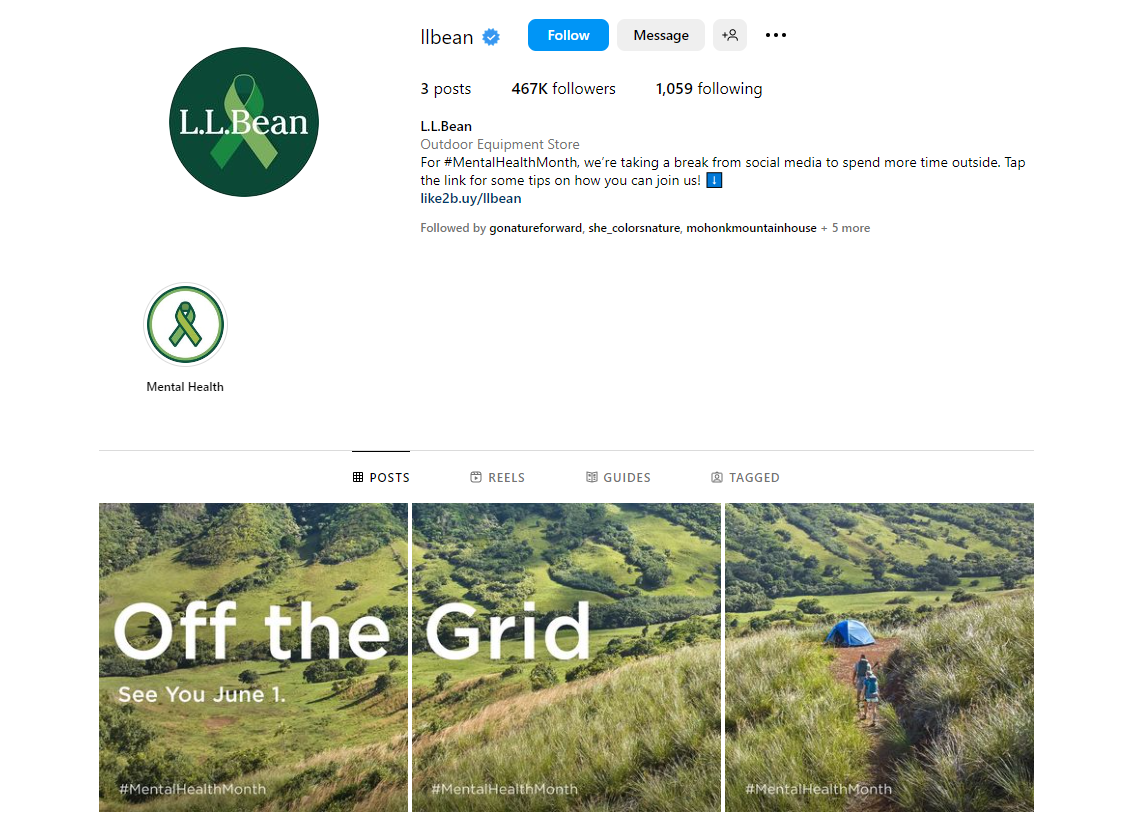
Ahead of the Curve: The Great Outdoors.
The Ahead of the Curve series highlights five emerging social trends that may impact our audiences and, therefore, our outreach and engagement efforts.
I believe it’s vital to understand the larger social forces influencing our audiences so we can proactively adapt our outreach approaches accordingly instead of reactively jumping on the bandwagon.

A reminder of where we’re at.
In the joy imperative post, I describe the drivers and catalysts behind these trends, which also apply to today’s topic.
Especially this data point:
“According to the World Health Organization, the pandemic triggered a 25% increase in anxiety and depression worldwide.” » Wunderman Thompson’s The Future 100
As a community of planet lovers, we know firsthand the mental and physical benefits of spending time in nature. If asked to describe a moment when we felt most at peace or most calm, it’s highly likely our moment occurred when we were outside.
So, it should be no surprise that individuals seeking to address their anxiety, stress, and depression are heading to…
THE GREAT OUTDOORS
“Around the world, walking has experienced a surge in popularity. TikTok trends such as #hotgirlwalk inspired users to celebrate how good their walk makes them feel, while 40% of users reported spending more time outdoors to support their mental well-being, according to Mindbody’s Annual Wellness Index.” » Dentsu Creative Trends 2023
Increasingly, people spend time outdoors to disconnect from their phones and the news cycle and reconnect to their loved ones and themselves through nature-based experiences.
Here are a few ways our audiences find connection and calm in the great outdoors.
1. Outdoor Recreation
We saw a burst of outdoor recreation during the pandemic, with more folks heading out to hike, camp, and get away for the weekend. At the time, being outdoors was the safest way to socialize.
Yet, it unlocked a continued interest in pursuing outdoor adventures due to the mental and physical health benefits it provides.
Outdoor recreation can take various forms, like trail hiking, fishing, forest bathing, camping (including backyard camping), and glamping. Companies are increasingly offering unique experiences, like covered wagon camping and off-the-grid cabins (below), to meet this growing demand.
2. Backyard Hobbies
Consumers don’t need to travel far to acquire benefits from nature – they can get them from their own yards. This explains why gardening, small-scale farming, and landscaping are growing hobbies.
TikTok has even emerged as a hotspot for gardeners to share their personal tips, updates, and failures as learning experiences for others.
Backyard hobbyists are not only looking at the aesthetic and psychological benefits of gardening, but they’re also actively investing in water conservation measures at home.
“And this doesn’t just apply to drought-stricken environments: Boomers and Gen X all over the globe will invest in rainwater harvesting, rain barrels, and drought-tolerant landscaping for natural ways to make their homes more sustainable.” » Pinterest Predicts 2023
Pinterest saw an increase in Rainscape-related searches in 2022, marking it as a trending topic for 2023.

3. Foraging
We’ve seen many examples of survivalist shows, where people brave the harsh elements of the wild and survive based on their nature know-how. There have been 44 seasons of Survivor!!! Fourty. Four. [facepalm]
The great outdoors movement is less about conquering wild nature and more about connecting with nature. Enter…foraging.
Living in a mountainous area, I see the growth of guided foraging trips first-hand. I just discovered a small patch of wild ramps in my yard that I may be brave enough to forage. And apparently, invasive Japanese knotweed (common where I live) can be harvested and turned into a rhubarb-crisp-style dessert. Who knew!?!?
The farm-to-table and celebrity chef world is also getting in on the foraging action. Hulu has a new TV show called “Chefs vs. Wild.”
“World-class chefs are dropped into remote locations to scavenge for wild ingredients to make a meal worthy of a fine-dining experience. Each chef is paired with an outdoor expert and survivalist to ensure they don’t accidentally ingest poisonous flora or fauna or injure themselves.” » Wunderman Thompson’s The Future 100
4. Employee Benefits
In 2015, REI launched #OptOutside as a counterpoint to the post-Thanksgiving shopping spree most retailers capitalize on.
Since REI’s innovative move, other outdoor companies have encouraged employees to spend time outside and designated days when staff can confidently log off from work.
These efforts typically occur during heavy shopping seasons to avoid overworking employees and, increasingly, are offered during mental health recognition seasons.
Check out L.L.Bean’s Instagram page for May, which is #MentalHealthMonth in the U.S.
It’s a smart move considering that much of the drive to spend time in the great outdoors stems from feelings of burnout and work-related stress.
“70% of workers say they would quit if another employer offered better policies to reduce burnout; it quite literally pays to put employee wellbeing front and center (Visier, 2022).” » Dentsu Creative Trends 2023
STAYING AHEAD OF THE CURVE
This trend is an excellent opportunity to connect the outdoors movement with conservation and sustainability actions.
Yet, it also poses a challenge to prevent an increased interest in nature from resulting in more damage to nature.
So, how can we foster responsible outdoor recreation without dampening enthusiasm or decreasing accessibility? Here are a few ideas for you to consider.
Establish nature breaks at work. Cultivating this practice internally keeps staff members engaged, happy, and healthy, which will be felt externally by your audiences and customers. Schedule walking meetings, outside staff breaks, outdoor sessions, and team treks.
Organize group activities. Don’t just tell your audience to get outside – host them outdoors! Outdoor activities may be new for many people, and your organization may be the trusted messenger they need to break the ice. Schedule various activities that meet different audiences’ needs, such as social hikes, silent hikes, bird watching, yoga, and plant ID treks.
Give gardening guidance. Yard-based activities are such a win! Creating things like pollinator-friendly gardens is relatively easy to do. They provide mental and physical benefits for the audience and, when done right, can have multiple benefits for the planet. Guide the audience in the right direction by providing clear instructions, helpful guides and tips, and reminders.
Demonstrate responsible behaviors. Social media is an excellent tool for motivating audiences to spend time outside and demonstrating what responsible behaviors look like. You can use your platforms to:
- Share photos and stories of staff spending time in nature.
- Provide tips and advice on how to enjoy nature safely and responsibly.
- Suggest ways of adding small doses of nature to everyday life.
- Sponsor outdoorsy challenges like Walk-it-off Wednesdays and plogging (both are real things).
Increase access to nature for everyone. Everyone deserves to experience the wonders and benefits of nature, and we should help increase and improve access to these resources. The previous suggestions include opportunities to lower barriers and gates to increase access.
By actively staying ahead of this trend, we can foster a greater connection to nature, encourage more people to make spending time outdoors a regular part of their lives and grow the movement in a sustainable manner.
I hope you enjoyed the second Ahead of the Curve series post. Next up is Age of Action.






